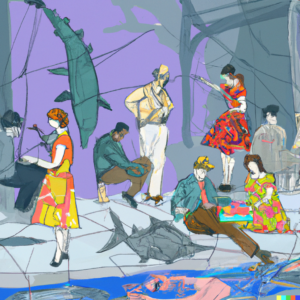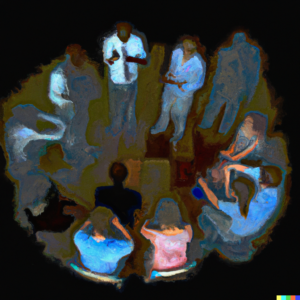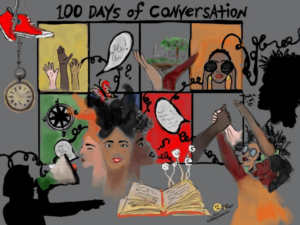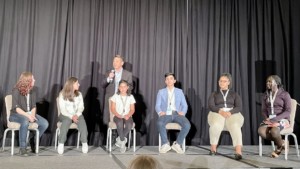Pop Up Museums Emphasize Conversations

For my last post on alternate models of access to informal STEM education, I’d like to return to the pop-up museum, which I mentioned briefly in my first post. Pop up museums might occupy empty storefronts, public spaces such as library common rooms or parks, or even vehicles such as converted RVs (these are often called mobile museums). The common idea of pop-up museums is that they appear in one place for a short amount of time – another brilliant variation of the “museum comes to you” theme. The only downside to pop-up or mobile museums is that there aren’t enough of them, especially for STEM. The AMNH ran four different Moveable Museums, while two science centers (one in California and one in Oklahoma) have (or had) mobile museums. While STEM pop-ups seem to be MIA, cultural pop-ups are popping up almost everywhere.
A recent twist to the pop-up or mobile museum concept is the idea of visitors providing the content – and focusing on sparking conversations between visitors rather than on didactic education. I spoke with Michelle DelCarlo, creator of The Pop-Up Museum, about what the pop-up model has to offer informal STEM education:
What is the pop up museum?
“The Pop-Up Museum concept I created is a participatory community event where people share personal objects and stories with one another. Each pop up has a theme, such as “adoption,” “handmade,” “culture,” or “home.”
How did you start it?
“As with all inventions, it started with an idea. I was hearing many museum professionals say that they wanted to find ways to connect more deeply with their communities, but they didn’t know how. So, my thought was: why don’t we make a museum experience all about the visitor and their objects, rather than the other way around? From that initial thought, I designed the pop-up museum experience, where people bring their own objects. From there, I had a pilot pop-up museum in a local library meeting room, because it was free to rent space there. And from there, I just kept finding ways to experiment with the format and find people who supported me.”
What is the goal of The Pop-Up Museum?
“The goal of The Pop-Up Museum is to create conversation between people of all ages and walks of life. I really want to create meaningful experiences for people based on objects, stories, and thoughtful reflection, and I believe it does that. It’s important because creating conversation between people builds community, which is part of a healthy, thriving society.”
How does a popup museum change peoples’ access to museums?
“In a typical museum experience, visitors can access stories, objects, and information only in the context that the museum sets forth. In a pop-up museum, the context of each theme brings forth every person’s perspective, which gives them more authority and access to the context of an idea. I’ve never had a science themed pop up, but I think it’s a great idea. In particular, having a pop up on relatively controversial issues, such as global warming or evolutions, would be fascinating to me. I would hope that a pop up on these topics could bring forth divergent perspectives that people would have to grapple with.”







0 Comments
Leave a Comment
Your email address will not be published. All fields are required.